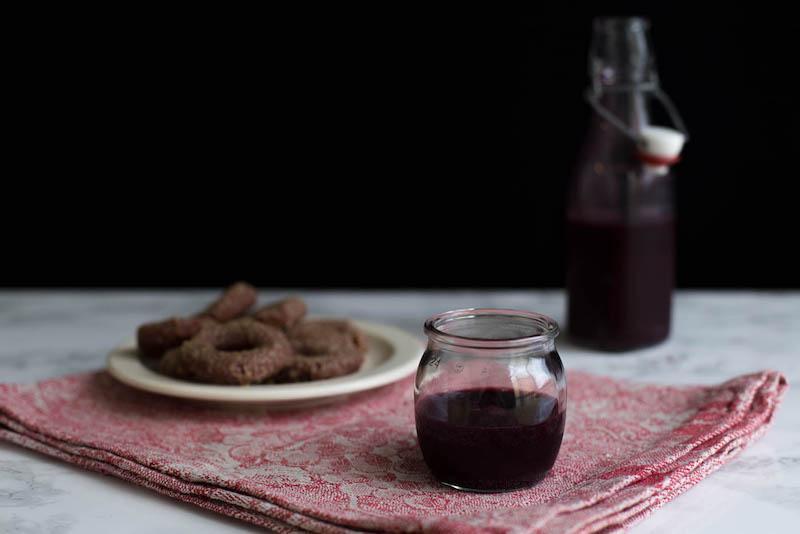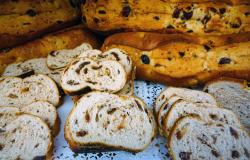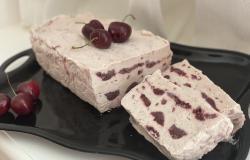Grape Must Syrup

Ever wondered what Europeans used to sweeten foods before cane sugar became available (and affordable)? Well, chances are that if they were in the Italian peninsula and islands, they would have used a dense, boiled-down juice extracted from clusters of the vine-growing berry fruit which has been cultivated there for several millenia, vitis vinifera, better known as the "grape."
Though appearing to date even further back in time, the first written record for grape must syrup in Italy comes from Apicius' 4th century AD collection of Roman recipes, De re coquinaria. In this Latin manuscript, mention is made of defrutum or grape must which is cooked and reduced to a syrup-like consistency during the autumn vendemmia or grape harvest. Since then, this syrup (which goes by many names in Italy, including mosto cotto, vino cotto and sapa) has been used for a variety of culinary purposes. Cremona and Mantua's sublime accompaniment to the bollito misto, mostarda di frutta, was traditionally prepared by preserving fruits in boiled-down grape must and spices. Festive biscuits called mostaccioli from Italy's south were sweetened with mosto cotto when the more expensive honey and sugar were unavailable.
In Science in the Kitchen and the Art of Eating Well, Pellegrino Artusi fondly recalled how children in his home region of Emilia-Romagna would mix sapa with freshly fallen to snow to make impromptu sorbetti. In the lead-up to St. Martin's Day (November 11), it is customary in Lazio to replace the wine that goes into the region's aniseed-flavoured ciambelline al vino (ring-shaped biscuits made with flour, olive oil and wine) with mosto cotto from the recent vendemmia. In Trapani, cuccia, a Sicilian porridge made with boiled wheatberries for St. Lucy's Day, is sweetened with a generous amount of vino cotto too. Perhaps the best-known example, however, comes from Modena and Reggio Emilia. In this part of northern Italy, people have been producing balsamic vinegar from aged mosto cotto since the Middle Ages.
To make this recipe at home, you'll need to procure wine grapes or fresh grape must from a wine producer. I'm fond of using muscat grapes (both black varieties like Hamburg and white ones) but do feel free to use another type of grape too. Chances are, you'll really enjoy experimenting with different grape varieties and the unique aromas (and colours!) they yield. The magenta-tinted syrup I obtained from using musky uva fragola (Isabella grapes, which are a cultivar grown in Italy of mixed north American and European origin) was just spectacular!
Please note that the cooking time can also vary, depending on the grape's sugar content. The higher it is, the shorter the time it will take for the must to condense to the desired syrup. For this reason, the cooking time indicated above and below is approximate. For telltale signs that your grape must is cooked, look out for a thickened and syrupy consistency and a three-quarter reduction in the must's volume. To be sure of the latter, keep a measuring jug handy.
After conserving your must in a sterilised swing-top bottle, leave it to age in a cool, dark place for several weeks, and, if you're patient enough, months. You'll find that your syrup undergoes a transformation, deepening in colour and mellowing in taste.
As for serving this old world sweetener, you can use it much like honey or maple syrup. Try it as a topping on fresh ricotta cheese or Greek-style yoghurt. Instead of forking out a substantial amount of money for a bottle of balsamic vinegar, why not use your homemade condiment to dress your salads instead? You may also wish to try your hand at baking with it, like I did with the ciambelline al mosto cotto in these pictures. Remember to remove two-thirds of your recipe's sugar content if you do so.
Ingredients (yields about 1.5 mL fresh grape must and about 350 mL of grape must syrup)
Wash and dry grapes. Remove carefully from stems and pass through a food mill in batches. Discard seeds and skins which will have accumulated on the top of your food mill's disc. Filter must through a fine-mesh sieve lined with cheesecloth. Pour filtered must into a heavy-bottomed stainless-steel saucepan and bring to boil. Lower heat to a gentle boil and remove any foam which rises to the top with a slotted spoon. Cook from 1 to 3 hours (the time will depend on the sugar content of your grapes). As the must cooks, it will reduce in volume, thicken and start to emit a cooked scent. Remove from heat when your must has reduced by at least three-quarters of its initial volume and has the consistency of a syrup. Cool syrup to room temperature. Strain it through a fine mesh sieve lined with damp cheesecloth. Using a funnel, pour syrup into a sterilised swing top glass bottle or bottles. Keeps in a cool, dark spot for a year.






